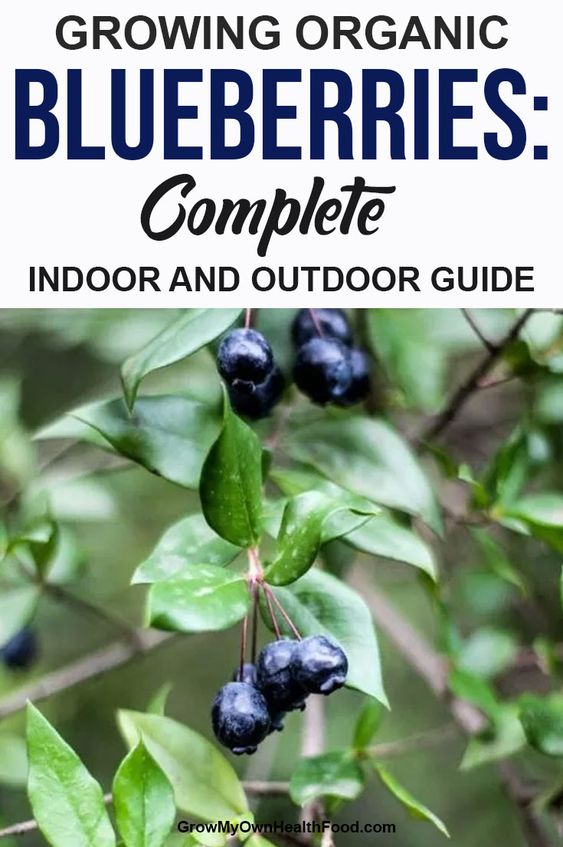Blueberries are easy to grow and yummy to eat; two reasons why anyone with a garden should be growing organic blueberries. In fact, you don’t even have to have a garden to grow them; with the right conditions, your blueberry bush will bloom as richly as it does in the garden.
Not only is a blueberry bush the center of attraction of any garden, but it also keeps you loaded with garden-fresh fruit all through the summers. After all, who wants to overpay for those flavorless berries that you get off the rack of a grocery store when you can have as many as you would like free of cost, fresh from your garden.
Whether you’re growing blueberries indoors or outdoors, one of the most important factors to secure a good yield is maintaining the best soil conditions, especially the pH level. Keep reading to find out all about growing organic blueberries indoors and outdoors.
Outdoor Planting
Step 1: Choose the Right Spot for Blueberry Plants
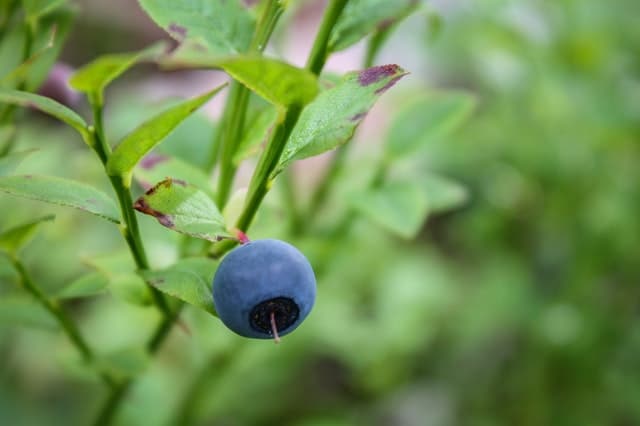
Find a spot in your garden that gets ample sunlight for best results of your blueberry farming. However, a little shade isn’t too bad for your blueberry plant, either. A location with too little sunlight may reduce the crop yield.
If you live in an unusually hot region, it’s best to plant your blueberries somewhere they’ll receive a little shade during the peak sunlight hours. Additionally, the site should have good drainage and rich in organic matter.
Step 2: Prepare the soil
Blueberries are best grown in acidic soil. pH level 4.5 is the acidity of the soil you will need for planting blueberries. If the land where you’ll plant them is naturally acidic, your work is little. However, if the pH level isn’t low enough, there are different methods that you can use to bring down the soil’s pH level to the desired level. Remember to prepare the ground somewhere in the fall, if you’re going to plant in early spring (that’s the best time to grow blueberries).
Ways to lower the soil’s pH:
- Include soil sulfur to the top layers of the soil until the pH lowers to around 4.5. You’ll need to do this step twice a year to maintain acidity.
- Include about 4 inches of acidic peat moss to your topsoil. It will keep the soil acidic for about two years.
- If you already have non-acidic plants in the vicinity, you may not want to lower the pH for the other plants as well. In such cases, it’s best to use an acid fertilizer such as Miracid. Initially, use a mild solution and check the effects on the acidity level on the site.
Prices pulled from the Amazon Product Advertising API on:
Product prices and availability are accurate as of the date/time indicated and are subject to change. Any price and availability information displayed on [relevant Amazon Site(s), as applicable] at the time of purchase will apply to the purchase of this product.
- Leaf compost, rotted sawdust, or any other kinds of acidic organic matter can also be used to lower the pH.
Step 3: Planting Blueberries
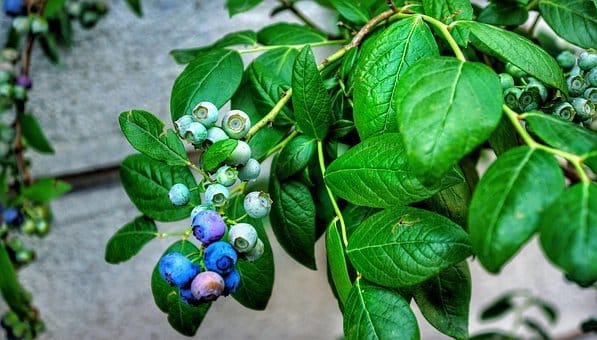
Blueberry is rarely grown from seeds. They are usually available for purchase in pots. For bigger and juicier blueberries, purchase two to three different varieties of plants. This will promote cross-pollination and enhance the yield.
- Bluecrop is the best all around variety for adaptability, yields, high quality fruit, & disease resistance. Large sweet berries, in midseason.
- Best if planted in full sun
- Hardiness zones 4-7
- Possibility of shipping dormant from November-March
- Plant may not look exactly as pictured due to plant growth stages
- Does not ship to CA, or, WA, MT, ID, UT, AZ, NV
Prices pulled from the Amazon Product Advertising API on:
Product prices and availability are accurate as of the date/time indicated and are subject to change. Any price and availability information displayed on [relevant Amazon Site(s), as applicable] at the time of purchase will apply to the purchase of this product.
Plant the blueberries about 12 inches apart and at the same depth under the soil as it was growing in the container in which you purchased it. The hole in which you plant them should be wide enough to prevent the roots from bending.
Water the plants and include 2 inches of acidic mulch to the surface. Mulching helps maintain the soil’s pH, it’s moisture and also prevents weeds from developing in the area.
Step 4: Blueberry Plant Care
Once you’ve planted the blueberries, they won’t ask for much pampering. Here are a couple of things you’ll need to take care of regularly:
- Pick off any flowers that appear on the blueberry bush, especially during the first year.
- Refresh the fertilizer each spring. Use organic fertilizer recommended for acid-loving plants for maintaining the best conditions for your blueberry bush.
- Mulch regularly, whenever you feel the requirement. The 2-inch depth of mulch that was initially established will need to be maintained.
- Water the bush when the ground is too dry. Make sure that you add enough water for it to soak around 6 inches deep.
Blueberry Indoor Planting
Limited gardening space should stop you from growing blueberries. Luckily, some new varieties can be grown indoors in containers. If you wish to grow them indoors, choose dwarf blueberries since they’ll take up little space and will yield quite a bunch to enjoy.
Step 1: Choose a sunny spot
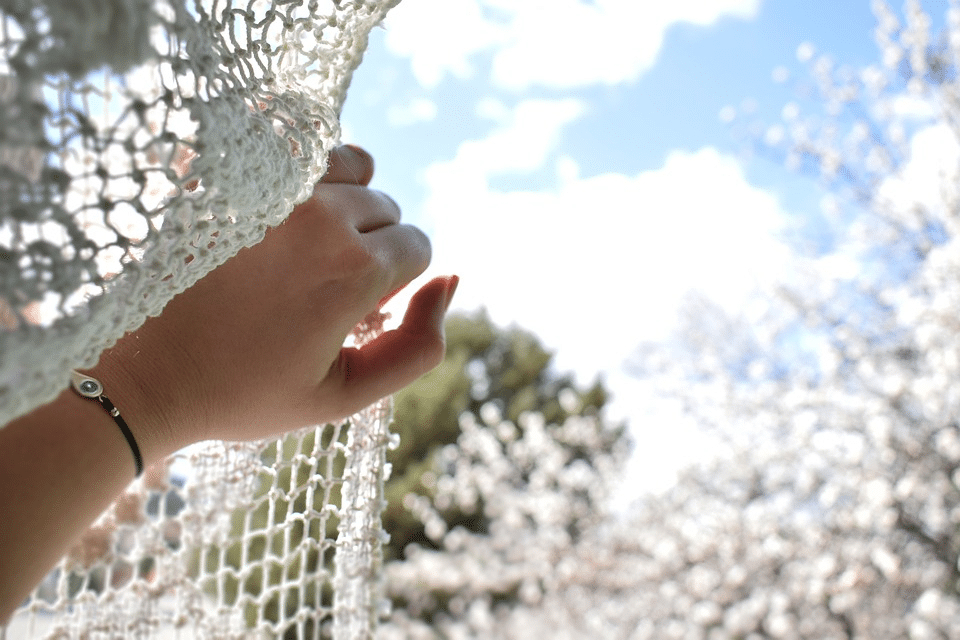
As is the case with outdoor planting, blueberries need plenty of sunlight to thrive. Choose a location next to a window where they’ll get direct sunlight for around 6 to 8 hours every day. There are artificial light options.
Step 2: Prepare the Pot
Next, you’ll need to pick a pot large enough for your blueberry plant. Each plant will require a 6-gallon container with a proper drainage system.
- DURABLE & LIGHTWEIGHT - Made from plastic, these containers are very durable and lightweight This makes them great for performing outdoor container gardening on your patio, porch, deck, or balcony
- TRADITIONAL DESIGN - The traditional design and natural colors enhance formal and informal plantings outdoors The classic look of the flower boxes allows them to fit into any setting
- DRAINAGE & CIRCULATION - These planter pots have raised feet for drainage and air circulation They also feature removable drain plugs, so you can easily transfer your outdoor plants indoors or control the water drainage of the planter
- PERFECT FOR ORNAMENTALS - These flower containers are perfect for displaying ornamental and decorative plants and flowers The simple design of the box helps to keep the attention on your plants making your deck feel more unified and elevated
- PAIRS WITH SAUCER - Pairing your planter with a sturdy saucer provides added protection against leakage after watering Our 15 5 Accent Planter is designed to perfectly fit and match our 15 5 Accent Saucer, model number SRO15500
Prices pulled from the Amazon Product Advertising API on:
Product prices and availability are accurate as of the date/time indicated and are subject to change. Any price and availability information displayed on [relevant Amazon Site(s), as applicable] at the time of purchase will apply to the purchase of this product.
As for the soil, they’ll require a pH level of around 4.5, as already discussed. So the usual potting mixture will not work here. You can mix the regular soil with peat moss, sulfur, or pine bark to lower the pH for your blueberry plant.
Step 3: Transfering Blueberry Plant to the Pot
- Once you have the acidic soil ready, fill the pot with one-third of the soil.
- Hold the blueberry plant that you purchased over the soil and fill more prepared potting soil over the roots until they are completely covered.
- Water the plant generously.
- Include a little mulch, such as pine bark or pine needles to the top layer of the soil.
Step 4: Caring for Your Indoor Blueberries
- Water the plant regularly. A gallon of water weekly for each square foot of the root area is the optimal water requirement for your blueberry plant.
- Fertilize the soil with acidic fertilizer as needed to keep the soil nourished and to maintain its pH.
- Regular pruning will be required after a couple of years to keep the bush healthy.
Step 5: Picking Blueberries
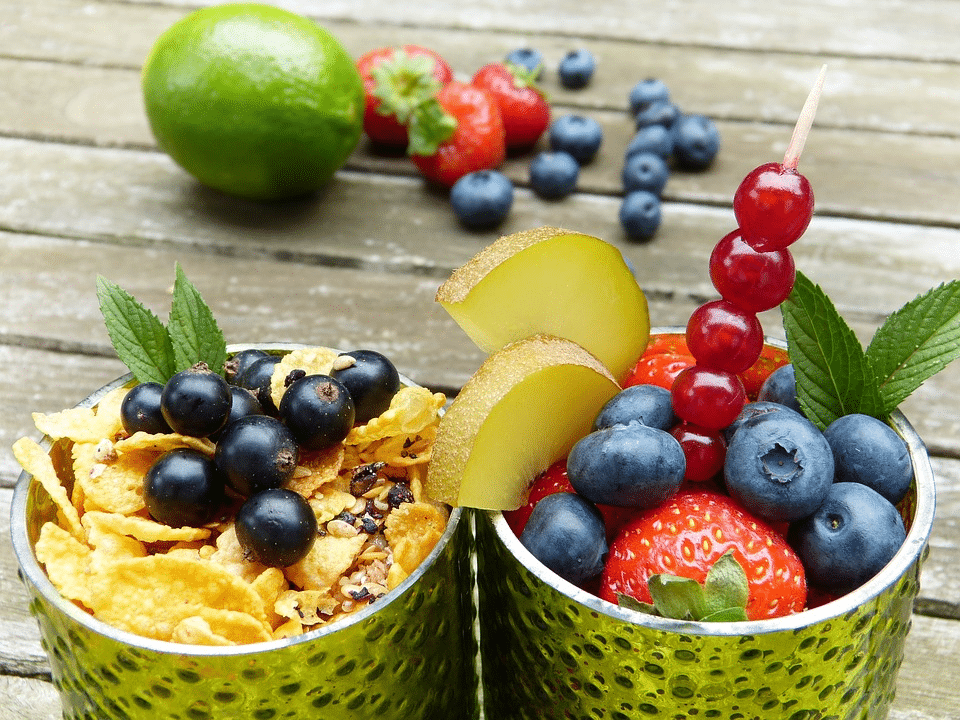
Now, this is the fun part. In fact, it may be the only reason you went through all this effort. Once your plant starts producing fruit, you’ll be able to tell on your own when to pick it. Harvesting time begins somewhere around July to August. Let the fruit turn deep blue. For extra juiciness, let them stay on the tree just a few days after they have fully riped before picking them. But don’t wait too long, either!
